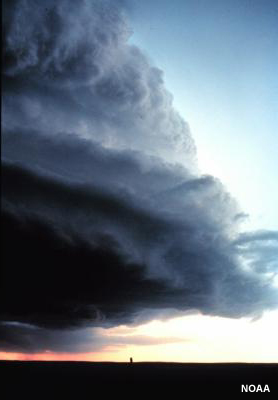Buoyancy

Buoyancy is the upward force that acts on a parcel of air in response to a density difference between that parcel and the surrounding air. This force causes the air parcel to accelerate vertically. Consequently, buoyancy processes are basic to the generation of convective updrafts and downdrafts. Several factors contribute to increase or decrease the buoyancy of air parcels. Increases in potential temperature and water vapor content increase buoyancy, while cloud water and precipitation act to decrease buoyancy.
For large scales of motion, buoyancy and the vertical pressure gradient force tend to balance each other. Such motions are in hydrostatic equilibrium.
For small scales of motion, as in convection, buoyancy may significantly exceed the vertical pressure gradient force. The resulting vertical accelerations can be much larger than than those typically associated with large-scale motions. Such motions are termed non-hydrostatic.
When vertical wind shear is weak, buoyancy is the dominant control on convective updrafts and downdrafts. Stronger shears lead to interactions between the updraft and shear, acting to enhance or suppress vertical acceleration.